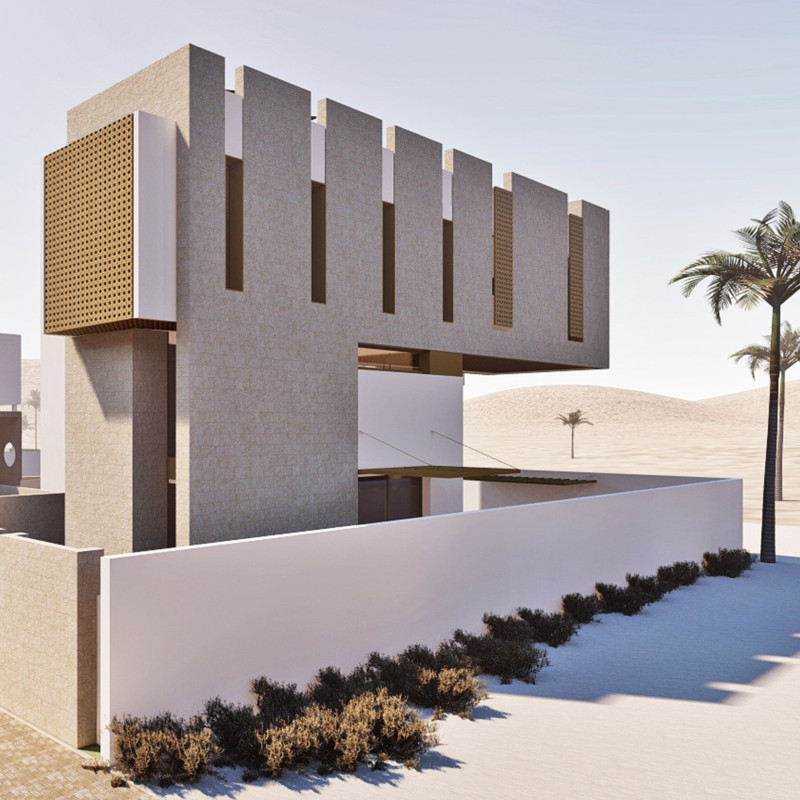5 key facts about this project
At its core, the architecture is intended for a mixed-use space, accommodating residential units, commercial areas, and communal amenities. This multifunctionality encourages interaction among users, fostering a sense of community within the urban fabric. The design promotes accessibility and inclusivity, featuring open areas that invite public use while maintaining private spaces that cater to individual needs.
The overall aesthetic of the project marries modern lines with organic shapes, creating a visual dialogue between the structure and its natural context. The careful selection of materials plays a vital role in this dialogue. The use of locally sourced stone not only roots the building in its geographical location but also connects it to the rich heritage of the area. Large expanses of glass provide natural light and allow for striking views, establishing a relationship between the interior and exterior spaces. The choice of textured finishes enhances the tactile quality of the façade, inviting closer inspection and engagement from passersby.
Unique design approaches have been taken to optimize energy efficiency without compromising aesthetics. The integration of green roofs and vertical gardens indicates a commitment to environmental sustainability, enhancing biodiversity while contributing to the building's insulation properties. These features exemplify modern architectural ideas that prioritize ecological considerations as integral to the design process, rather than as an afterthought.
The layout of the project is marked by fluidity and adaptability. Architectural plans demonstrate a careful consideration of circulation, ensuring that pathways within the structure encourage movement and exploration. Key areas such as common lounges and rooftop terraces provide venues for social interaction, while private units remain distinct, fostering a sense of personal space within the communal framework.
Architectural sections reveal the thoughtful layering of spaces, where sightlines and natural ventilation are optimized. The strategic placement of windows takes advantage of prevailing winds, reducing reliance on mechanical cooling systems and enhancing the building's overall sustainability profile.
Throughout the design, the emphasis on transcending conventional boundaries between indoor and outdoor environments is evident. The careful positioning of the structure allows for shaded outdoor areas that can be used throughout the year, blurring the line and creating an inviting atmosphere conducive to both relaxation and social gatherings.
Underlying the architectural vision is a strong narrative that conveys respect for the local culture and environment. The project engages with its context, drawing upon geographic characteristics to shape its identity and purpose. Through a series of workshops and community discussions, the design has evolved to meet the expectations and aspirations of those it aims to serve, reinforcing the importance of participatory design processes in contemporary architecture.
In summary, this project represents a sensitive and intelligent approach to modern architectural design, seamlessly integrating various functions while prioritizing sustainability and community interaction. The choice of materials, innovative layout, and commitment to blending with the natural environment become defining elements of this work. Readers interested in delving deeper into the architectural designs, plans, and sections are encouraged to explore the project's presentation to gain further insights into the thoughtful conceptualization that drives this remarkable achievement in architecture.


 Samer Salim
Samer Salim 























